Have you ever seen a plant that shines like a mirror? If not, you might want to check this out.
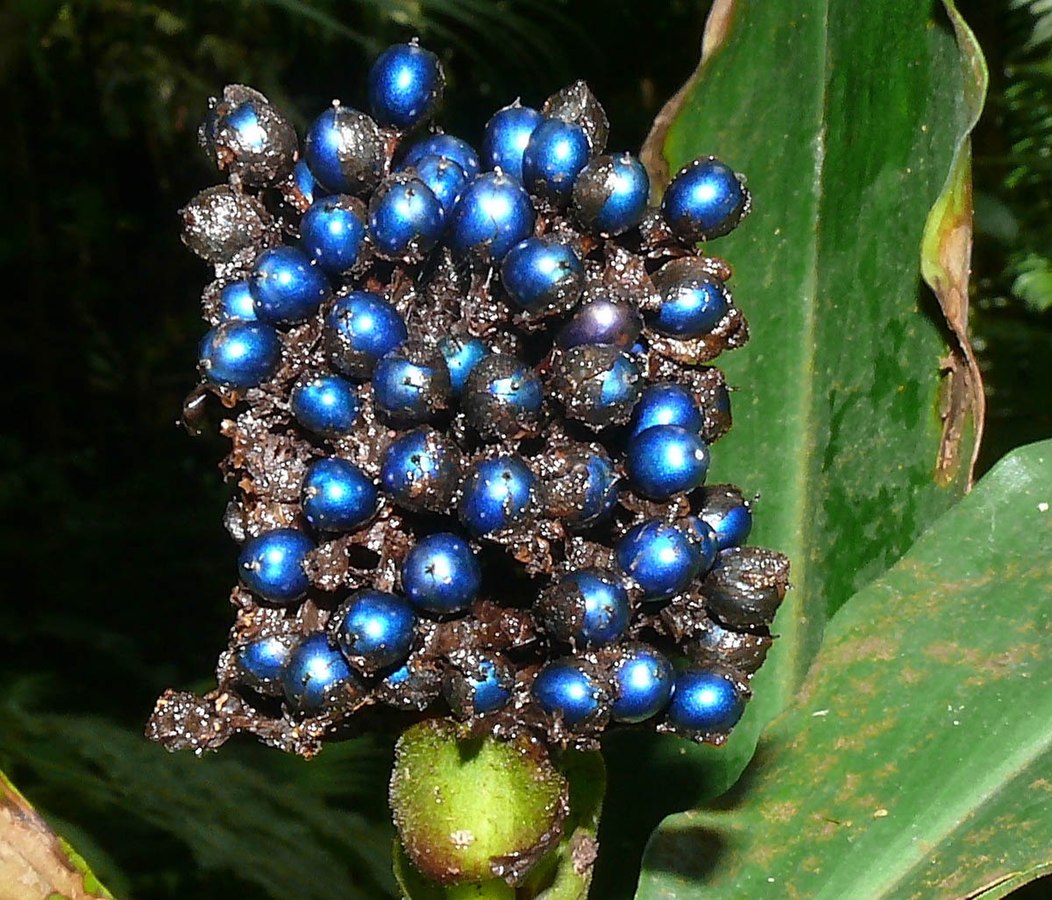 Marble berry, the brightest plant in the world. Image credit: Juliano Costa
Marble berry, the brightest plant in the world. Image credit: Juliano Costa
Pollia condensata, also known as the marble berry, is an African plant produces the most intense color ever studied in biological tissue, thanks to its unique structure and optical properties. It grows in the forests of Ethiopia, Mozambique, Tanzania and other African countries and has large, smooth, narrow leaves, with pale pink or whitish flowers on a stem about 60 cm high. The fruit capsule is about 5 mm in diameter and has a hard, dry texture.
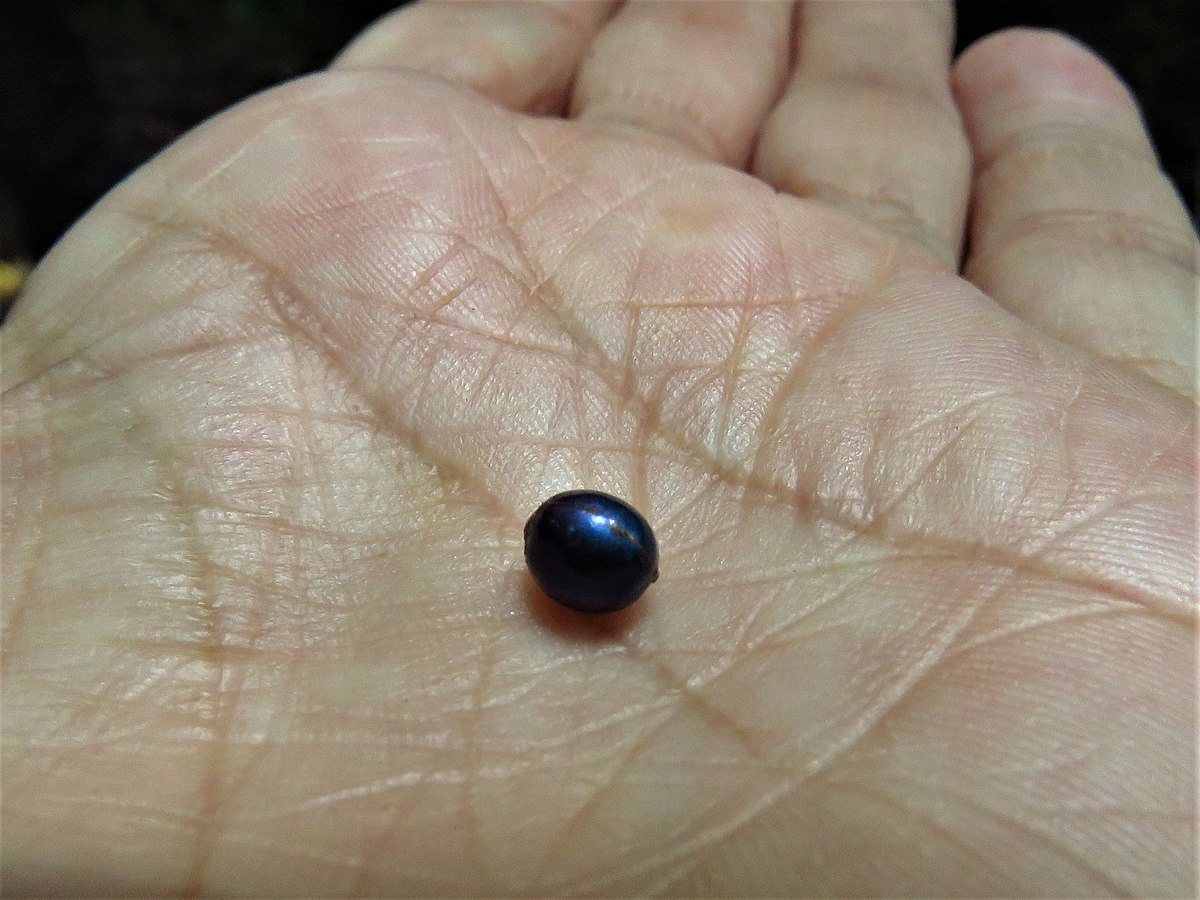 Marble Berry from Mpanga Forest, Mpigi, Uganda. Image credit: annikaml
Marble Berry from Mpanga Forest, Mpigi, Uganda. Image credit: annikaml
The most remarkable feature of this plant is its fruit color. The fruit has a metallic blue hue that reflects light like a mirror. The color is so bright and pure that it can be seen from a distance, even in the shade. The color does not fade over time, even after the fruit is picked. In fact, some specimens at the Kew Botanical Gardens in London that were gathered in Ghana in 1974 still retain their iridescent hue, as you can see below.
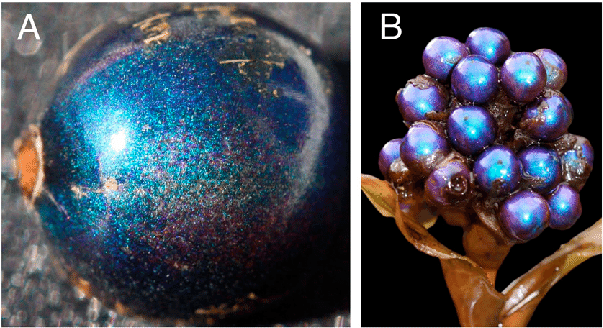
(A) Single Pollia condensata fruit from dried herbarium specimen collected in Ghana (Kew Herbarium: Faden and Lock 74/ 37, 1974). The blue color of the fruit is not uniform but has a brilliant pixelated iridescent appearance with green and purple/red speckles. (B) Infructescence (cluster of fruits) from alcohol-preserved specimen collected in Ethiopia (Kew Herbarium: Moult 24, 1974).
Unlike most plants, Pollia condensata does not rely on pigments to produce its color. Pigments are compounds that absorb certain wavelengths of light and reflect others. For example, chlorophyll is a pigment that absorbs most wavelengths of light except green, which is why most plants are green.
Pollia condensata uses a different mechanism called structural coloration. This means that the color is created by the way light interacts with the structure of the material, rather than by chemical substances. Structural coloration is common in animals, such as butterflies, peacocks and beetles, but rare in plants.
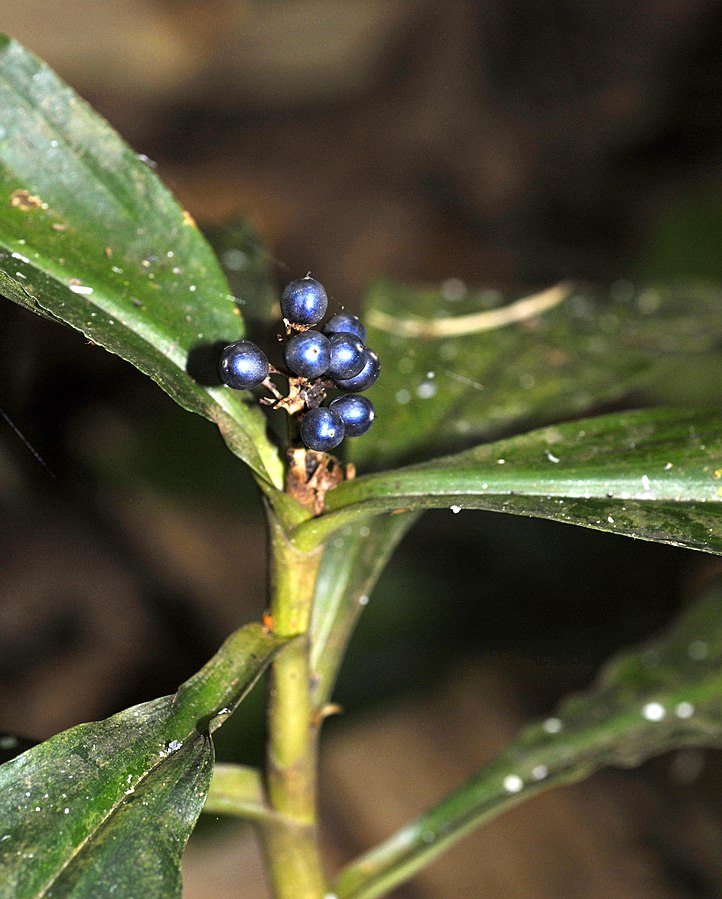
Marble berry plant on Mount Mabu, Mozambique. Image credit: timharris
The surface of the Pollia fruit has a very smooth and transparent cuticle, which reflects light as a mirror does. Beneath this glossy surface lies a special layer of cells that have an elaborate but unpigmented microstructure. The cells have walls made of spirally stacked cellulose microfibrils, which are tiny strands of plant fiber. The height of the stack varies from cell to cell, which determines the wavelength of light that is reflected. The stack also acts as a filter that amplifies the light at that specific wavelength, creating a very intense and pure color.
The total reflectivity of the Pollia fruit is about 30% of that of a silvered glass mirror, and is the highest of any known biological material. The color also varies depending on the angle of view, creating an iridescent effect.
The reason why Pollia condensata evolved such a color is not fully understood. One possible explanation is that it attracts birds that help disperse its seeds. The fruit has no nutritional value for the birds, but they may use it to decorate their nests or to attract mates. The bright color may also serve as a warning signal to deter predators or parasites.
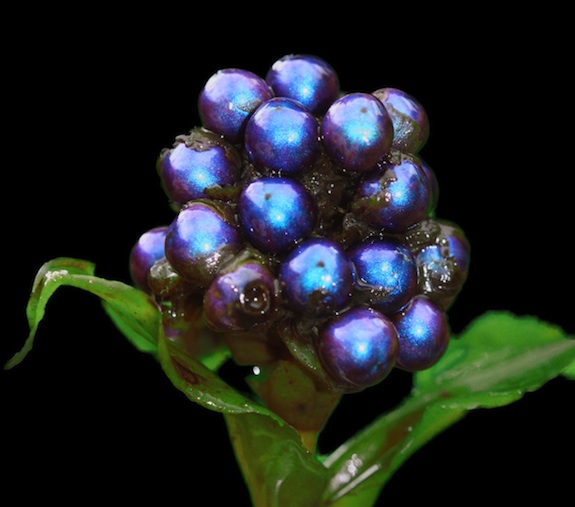
Pollia condensata uses nanoscale-sized structures to produce the most intense color ever observed in nature. Image credit: PNAS
Another possible explanation is that the color is simply a by-product of the plant’s adaptation to its environment. The hard and dry texture of the fruit may help it survive in harsh conditions, such as drought or fire. The cellulose microfibrils may provide strength and stability to the cell walls. The color may have no adaptive function at all, but simply emerged as a result of natural variation and selection.
Whatever the reason, Pollia condensata is a fascinating example of how nature can create stunning beauty from simple materials.
Sources: 1, 2, 3, 4





